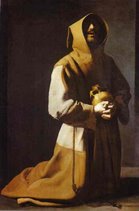A Lenten Reflection
In the second week of Lent, I’m sitting here writing about art, while many, more spiritually-minded, are staying away from these types of self-reflections or reviews. But in my weakness, I need the distraction, the time to pause, from a few other obligations. (Or maybe I’m establishing that I’m really the worst-type of Novus ordo Catholic: Lent, schment.) Excuse my self-justification for indulging this behavior, and you are of course free to stop reading now.
I have loved two particular stories about darkness and mistaken identity since pre-teen days. The first is the Greek myth of Cupid and Psyche, as first encountered in Edith Hamilton’s classic school text Mythology. I was baffled as to how Psyche could not know that Cupid, her husband and lover who came to her only in the darkness, was not some awful serpent who would devour her. After Psyche has betrayed him by gazing upon him as he slept, Cupid delivers a parting line that I loved: “Love cannot live where there is no trust.”
The other story is of that deceiver, Jacob, who uses Isaac’s blindness to receive the blessing meant for his brother, is himself tricked in the dark when he mistakes Leah for Rachel, and wrestles with an angel in the dark. By sunrise he has a new identity as
Of course, darkness has always held great significance – God separates darkness from light; Christ enters a darkened world. The world again darkens at Christ’s death. The womb and the tomb are in darkness. All manner of scary stories are told “in the dark.” To be in the dark is to be uncertain and vulnerable, in a state where people can make and re-make themselves, as with Jacob and Leah and all our legends and fairy tales of people who can shape-shift once the sun goes down. In the dark, one can lose one’s identity, one can be tricked, and one can emerge in the daylight changed.
Far from being in the dark, I’ve always thought of our modern world as glaringly in the light – we may have bad vision, but we certainly have a lot of brightness. There’s almost nothing that can’t be uncovered and dissected and discussed – we hate mystery. Everything needs to be explained and put up for public discussion.
I grew up during the time that sex, at its most technical and mechanical, began to be discussed on shows that even children (such as myself) would commonly watch. This development was at least partly the response to HIV and AIDS, but certain elements of popular culture also took advantage and began to further endorse a hyper-masculine American culture where hyperactive male sexual expression was the only type allowed. Thus, even the most intimate of activities was put under blinding bright light.
An aside: I’ve always thought that the relationship between the main characters, Paul and Jeanne, in Last Tango in Paris would have at least possibly had a chance if they had engaged in at least some of their sexcapades in the dark. Of course, that it seems they never did has its own meaning.
When we look at our culture, it’s like looking in a mirror – not seeing yourself as you are, but seeing yourself looking at yourself. The great thing about art, when it works, is that you don’t experience self-reflection, but a kind of re-making. For purely practical reasons, of course, we usually experience the arts in semi-darkness (except for sculpture and architecture, of course). But in the darkness of a theatre or concert hall or a museum (except for the modern art sections of the museum, haha), where no one can really see you, you have an opportunity for a type of self-emptying to be filled back up with the beauty and mystery that the artist invites you to participate in. In the dark you can’t see your own reflection. You can only experience, and maybe be inspired. Train yourself to do this in the arts enough, and you may find yourself more easily doing it before God.

No comments:
Post a Comment